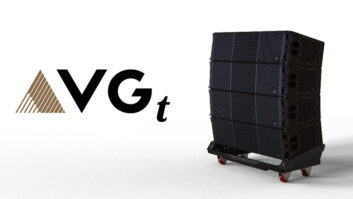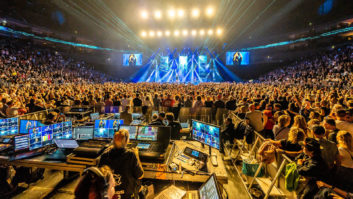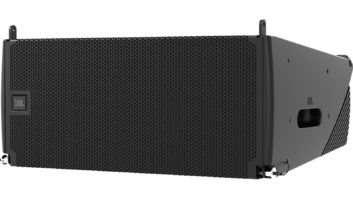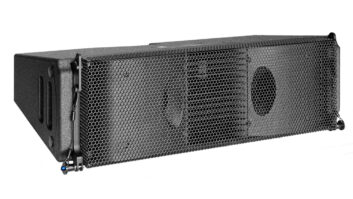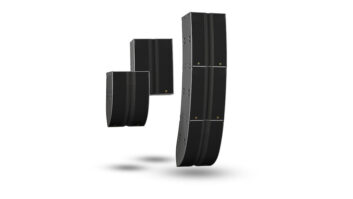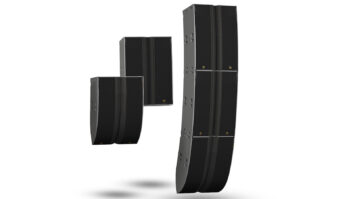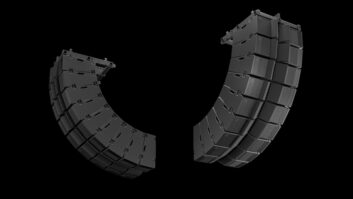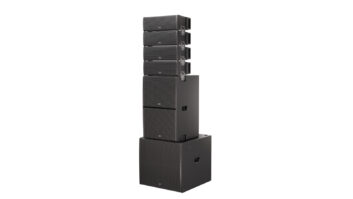By Frank Wells.

Observant visitors may have noticed an unfamiliar loudspeaker system hung in Martin Audio’s display at the 2010 Frankfurt ProLight & Sound exposition in March. Little was said at the time on the stand, but in a side corridor, Martin Audio R&D director Jason Baird was giving a private look at their new flagship system, MLA.
The result of years of research and design, Martin eschews the simple “line array” moniker for the system, proclaiming that MLA, for Multicellular Loudspeaker Array, is “the” complete touring sound reinforcement system, which, Baird told PSN, moves “beyond the kind of concepts held dear by the line array marketplace.”
Indeed, the MLA system tackles system control with an unprecedented degree of processing potential. Individualized component control has previously been employed for component optimization, or for system control in smaller systems, but the MLA system is groundbreaking in its ambition and implementation. Each MLA cabinet houses six “cells”–two “hybrid loaded” (both horn loaded and ported) 12-inch drivers as the LF cell, two horn loaded mid range drivers, and three horn loaded 1-inch compression drivers for HF. Each cell has dedicated amplification and DSP processing. System control is networked and computer controlled. The Display 2.0 system design software allows desired vertical coverage to be entered and graphically displayed, including venue size, wall and ceiling locations, balcony location and seating location and angles. The system calculates the phase, level and equalization coefficients for each cell in the array—that’s 144 different processing settings in a maxed out 24 cabinet array—to best realize the coverage sought.
“By having that fine level of granularity,” says Baird, “we can get amazing control of how the system performs and can deliver amazingly consistent frequency responses and sound pressure levels over the audience area.”
Where a traditional approach might be to develop a consistent wavefront at the loudspeaker, Baird says with MLA, Martin is “moving away from creating an iso-phasic wavefront” to creating a signal that is isophasic at the listener’s ear rather than at origin at the speaker position. FIR crossover and equalization filters are employed for mids and highs, with more conventional IIR designs on the low end to avoid latency issues. Baird says the FIR approach is what makes the precision of the system possible, and that with it, you get “for free,” steep slopes that minimize crossover point anomalies and the ability to fine tune frequency response. The cellular implementation of DSP is credited with providing a high degree of correlation between predicted and actual performance. Consistency “night after night, show after show, venue after venue” was a stated goal in MLA’s development, as was a reduction in set-up time and the development of “smarter” set-up tools. MLA cabinets are spec’d at providing 140 dB at 1M per box and use a power factor corrected power supply to smooth out current draw, thus limiting heat loss in mains cabling. Martin also cites 3 kW continuous total amplifier power per box (6 kW peak), with efficient digital designs. Further design elements include patented and patent pending wave shaping hardware to smooth performance and tighten dispersion patterns.
Completing the line are the MLX flown sub (which can be mounted in reverse where appropriate for pattern control, and be arrayed in “broadside” for precise LF control that goes “beyond the concept of just cardioid”), the MLD downfill cabinet, the 4-in and 10-out Merlin processor and VU-NET real-time control software. Control is managed via Martin’s proprietary U-NET redundant ring networking system (which also utilizes proprietary fast connect, waterproof network connectors instead of conventional “RJ45 connectors, which have no place in professional audio”). Audio input can be AES3, analog or via U-NET.
